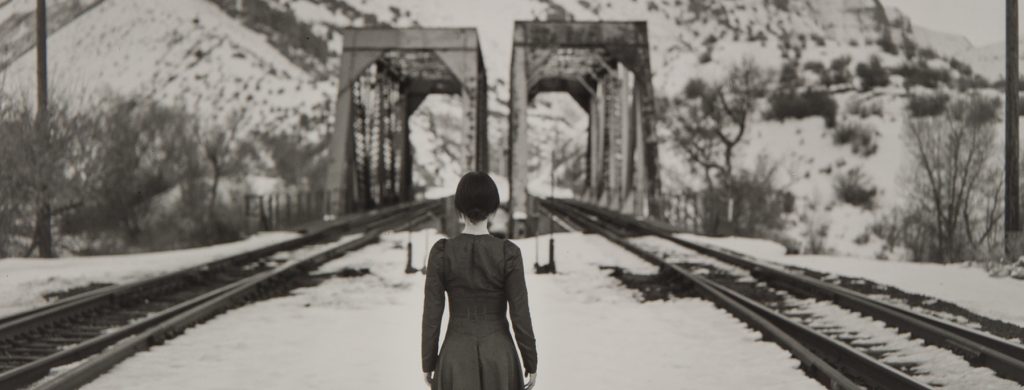With every viewing, the range of artworks keeps surprising me in “Transcontinental: People, Place, Impact,” the new Rio Gallery exhibition.
By range, I’m referring to such contrasts as the printed stories and creative railroad interactivity of Stefanie Dykes and Amie Tullius’ well-travelled “Train Tracts,” paired with Gregg Deal’s “The Divinity of Inanimate Objects Omit their Sins,” a vivid collage painting tipped with gold leaf. (At the Rio’s artist reception on Friday, “Train Tracts” writers will read beginning at 4 p.m., while Deal will perform at 7 p.m.)
Deal, a former Utah resident who is a member of the Pyramid Lake Paiute tribe, will perform as a black-clad Indigenous character he calls Nobody. His activism, Deal says, challenges the validity of the Transcontinental Railroad. “My very existence as a Native person stands in conflict with it,” the artist told “Slug” magazine’s Paige Zuckerman.
The exhibition includes the work of 35 artists and offers an impressive collection of artistic concepts (from provoking to educating to celebrating) as well as an extensive variety of media, from painting to stoneware to performance to printmaking. “It’s the most diverse bunch of Utah artists I’ve ever curated into one room,” says Felicia Baca, who curated the show with Amanda Moore.
The exhibition also showcases John Clark’s vintage-influenced, stylized Golden Spike anniversary prints, David Koch’s heroic “The Golden Road” landscape and the vivid colors of Royden Card’s desert scenes, “Above the Tracks — Echo” and “East of Lucin — North of Rabbit Springs.”
Everything about the exhibition underscores the epic weight of what the completion of the Transcontinental Railroad meant. The gallery show is part of the state’s Spike 150 anniversary celebrations — with an irresistible tagline, “party like it’s 1869” — which include exhibits about the contributions of Chinese, African-American and Mormon laborers, as well as the commission of a poem by Utah poet laureate Paisley Rekdal.
I’m fascinated by Anthony Ithurralde‘s vibrant images of African-American porters and waiters outside a jazz club near Ogden’s Union Station. I’m pulled back to the beautiful moody abstractions of Xi Zhang’s horizontal acrylics, the pulleys and cables of Chris Purdie’s “Time to Time,” and the vintage nostalgia of Zachary Proctor’s “Final Preparations.”
But I want to spend even more time thinking about Russel Albert Daniels and Denae Shanidiin’s “Weber Canyon,” a haunting photographic image that provocatively challenges what’s contemporary and what’s history. Coupled with Caitlin Connolly’s “Women Moving Mountains,” these images offer striking ideas about what happens when we change what’s included in the frame of our stories. — Ellen Fagg Weist

“Transcontinental: People, Place, Impact” at the Rio Gallery, 300 S. Rio Grande St., Salt Lake City, through June 14. Artist reception on Friday, April 19, from 6-9 p.m. Free.

